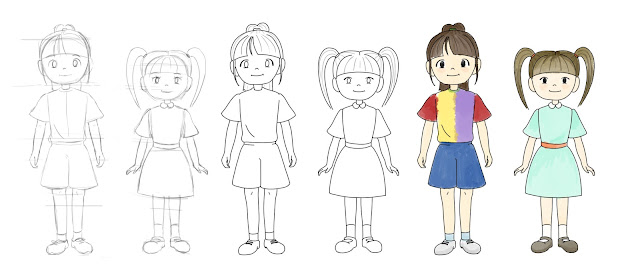I had never drawn the characters for myself, so I took the opportunity to practice drawing the characters in Photoshop. Here I was able to experiment with line quality, as well as potential watercolour brushes/colours for the characters.
Photoshop Character Progress
I placed the coloured characters on top of a watercolour background I had previously produced, to see if I thought they worked well in the space. I like that even though the linework in the background is fineliner, the digital line of the characters fits seamlessly. I also like that the colour has a similar effect; the style is consistent due to the type of brush used, but the colours aren't as washed out as the background, yet not as harsh/bold as the regular brushes in Photoshop I am used to using.
Characters In The Environment Test
I also practiced drawing the characters on paper, and I coloured them with watercolour paints to compare the different results. I'm drawn more towards the digital colouring of the characters as I like the contrast between them and the background.
Watercolour Characters
Now I have a greater understanding of how the film is going to look, which I am happy with. This means that I'll be able to progress with animation tests. I first want to try looking at layering up background components in After Effects to try and give the background more depth, so I shall have to produce larger watercolour pieces, so I can also explore using the camera tool.








































